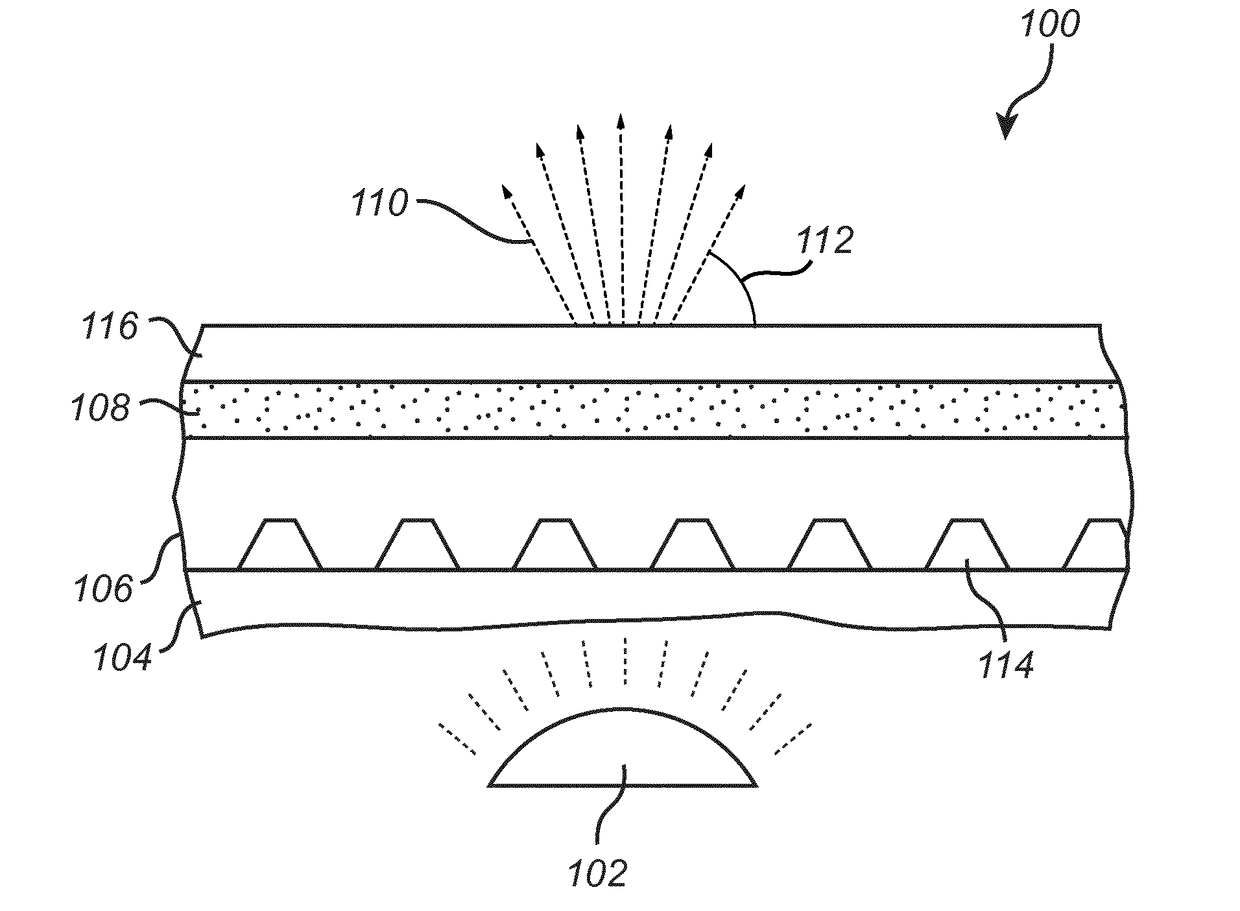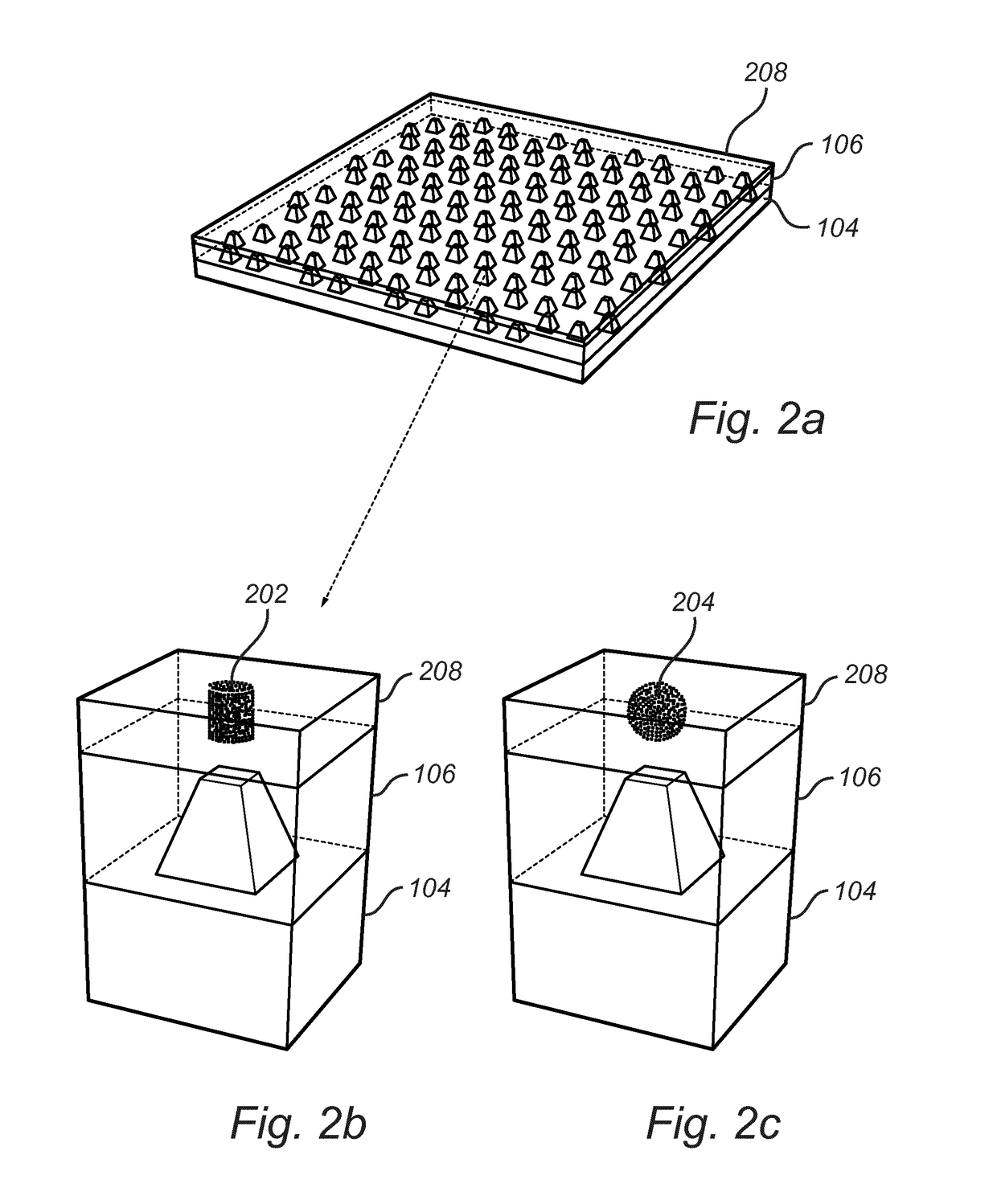Spatial positioning of photon emitters in a plasmonic illumination device
a plasmonic illumination and spatial positioning technology, applied in semiconductor devices, lighting and heating apparatus, instruments, etc., can solve the problems of scattering losses, further losses, and absorption losses, and achieve the effect of increasing the tapering of the antenna elements, increasing the magnetic and magneto-electric response, and increasing the tapering
- Summary
- Abstract
- Description
- Claims
- Application Information
AI Technical Summary
Benefits of technology
Problems solved by technology
Method used
Image
Examples
Embodiment Construction
[0047]The present invention will now be described more fully hereinafter with reference to the accompanying drawings, in which exemplary embodiments of the invention are shown. This invention may, however, be embodied in many different forms and should not be construed as limited to the embodiments set forth herein; rather, these embodiments are provided for thoroughness and completeness, and fully convey the scope of the invention to the skilled person. Like reference characters refer to like elements throughout.
[0048]In the present detailed description, various embodiments of the illumination device according to the present invention are mainly discussed with reference to an illumination device with a photon emitting layer comprising wavelength converting particles. It should be noted that this by no means limits the scope of the present invention which is equally applicable to other types of photon emitters which may be comprised in the illumination device.
[0049]FIG. 1 is a schem...
PUM
 Login to View More
Login to View More Abstract
Description
Claims
Application Information
 Login to View More
Login to View More - R&D
- Intellectual Property
- Life Sciences
- Materials
- Tech Scout
- Unparalleled Data Quality
- Higher Quality Content
- 60% Fewer Hallucinations
Browse by: Latest US Patents, China's latest patents, Technical Efficacy Thesaurus, Application Domain, Technology Topic, Popular Technical Reports.
© 2025 PatSnap. All rights reserved.Legal|Privacy policy|Modern Slavery Act Transparency Statement|Sitemap|About US| Contact US: help@patsnap.com



